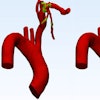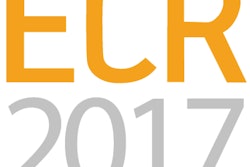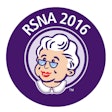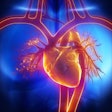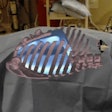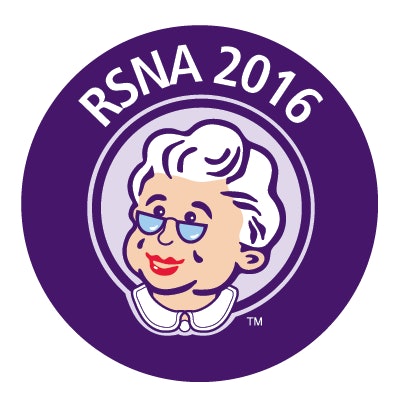
CHICAGO - Patients may perceive terminology in radiology reports differently than radiologists do, so it's important that radiologists use clear language when describing their findings, according to a study presented on Tuesday at RSNA 2016.
Researchers surveyed patients and radiologists and asked them to rank the statistical likelihood of the presence of cancer for 10 common modifiers used to report findings. They found that the two groups had statistically different ratings for eight of the 10 questions.
The results highlight the need for radiologists to strive to use unambiguous terms that communicate the results of an examination clearly and effectively, according to presenter and radiology resident Dr. Marina Mityul from Washington University's Mallinckrodt Institute of Radiology in St. Louis.
Language matters
The radiology report represents the radiologist's traditional primary work product, Mityul said.
"It's the way we communicate our findings to clinicians and, increasingly, to other end readers including patients," she said. "And it's a medical and legal document of the care that we provide."
There has been significant interest lately in improving reporting practices, including the RSNA's reporting initiative, the "Speaking of Language" editorials in the Journal of the American College of Radiology, the inclusion of actionable reporting as part of the ACR's Imaging 3.0 initiative, and efforts to provide patients with direct access to their radiology reports through patient portals and in person.
A 2013 Mallinckrodt study surveyed 100 primary care physicians and found that clarity of language was the second most important component of the radiology report. Diagnostic accuracy was considered to be the most important component.
The same survey showed that "unclear language" was considered to be the second most significant problem with radiology reporting; "too many recommendations" was deemed the most significant problem, according to the group.
"Primary care physicians are concerned about the language, knowing that patients are increasingly having access to their radiology reports, and do think that radiologists should be aware of this and perhaps should adjust their language," she said.
Evidence is indeed mounting that patients want access to their radiology results. In a 2014 survey of approximately 600 patients, Mallinckrodt researchers found that approximately two-thirds preferred communication models that included the option to receive copies of their reports.
The 2014 survey also asked patients to provide structured feedback on actual radiology reports. The 104 participants had a self-reported mean level of comprehension of 2.53, on a scale of 1 to 5.
Nearly 60% of the participants cited "unclear or technical language" as their biggest problem with radiology reports. In addition, 20.1% of respondents sought an explanation of the findings in lay terms, Mityul said.
Do patients understand?
As a result, the researchers set out to explore how patients and radiologists interpret the diagnostic certainty implied in commonly used phrases within the radiology report. Over a two-day period, they invited 138 patients to participate in a survey while the patients waited to receive outpatient radiology exams. The group also invited 133 radiologists to participate in the survey by email.
The survey asked participants for their personal interpretation of the statistical likelihood (0-25%, 26%-50%, 51%-75%, 76%-99%, and 100%) of the presence of cancer for 10 common modifiers used to describe findings. Each of the five likelihood categories was assigned a numerical value of 1 to 5 for statistical purposes.
The respondents consisted of 115 patients (83.3% response rate) and 59 radiologists (53% response rate). Of the patient respondents, 55% had completed college, 12% had postgraduate education, and 33% did not have a college education. The researchers did not find a statistical difference between mean responses for men and women.
Significant differences
Radiologists had a higher level of agreement in statistical likelihood scores than patients did, the researchers found. What's more, radiologists attributed more confidence than patients to all phrases, except "may represent," "cannot be excluded," and "probably" metastatic disease. With the exception of the phrases "concerning for" and "may represent metastatic disease," the responses were significantly different between patients and radiologists for most questions, Mityul said.
| Patient and radiologist likelihood scores | |||
| Report phrase | Median patient statistical likelihood score | Median radiologist statistical likelihood score | p-value |
| Likely represent metastatic disease | 3 (95% confidence interval: 3.0-3.4) | 4 (95% confidence interval: 3.8-4.0) | 0.0001 |
| Compatible with metastatic disease | 3 (95% confidence interval: 3.1-3.5) | 4 (95% confidence interval: 3.5-3.9) | 0.0243 |
| Consistent with metastatic disease | 3 (95% confidence interval: 2.4-2.9) | 4 (95% confidence interval: 3.9-4.2) | < 0.0001 |
| Concerning for metastatic disease | 3 (95% confidence interval: 2.6-3.1) | 3 (95% confidence interval: 3.0-3.3) | 0.1399 |
| May represent metastatic disease | 3 (95% confidence interval: 2.4-2.8) | 2 (95% confidence interval: 2.3-2.6) | 0.3089 |
| Suspicious for metastatic disease | 2 (95% confidence interval: 2.3-2.8) | 3 (95% confidence interval: 3.1-3.4) | < 0.0001 |
| Metastatic disease cannot be excluded | 2 (95% confidence interval: 2.0-2.5) | 2 (95% confidence interval: 1.6-1.9) | 0.0115 |
| Diagnostic for metastatic disease | 4 (95% confidence interval: 3.1-3.6) | 5 (95% confidence interval: 4.7-4.9) | < 0.0001 |
| Probably metastatic disease | 5 (95% confidence interval: 4.0-4.4) | 4 (95% confidence interval: 3.5-3.8) | 0.0016 |
| Represent metastatic disease | 4 (95% confidence interval: 3.3-3.7) | 5 (95% confidence interval: 4.7-4.9) | < 0.0001 |
"The language that we use is really important to the end readers and, increasingly, those aren't just referring clinicians, radiologists, and lawyers, but also patients," Mityul said. "We should be aware that patients are increasingly accessing their medical records and getting more involved and literate in their care."
Patients' perceptions of diagnostic certainty based on report terminology are not always in line with the perceptions of referring physicians and radiologists, Mityul said.
"This can create some communication barriers," she said. "So hopefully some of the data that we present here can inform radiologists about what patients understand and perceive from their reports. And I think it would be a great idea for of all of us to try to use unambiguous terms to try and communicate what we're trying to say."
What radiologists can do
There are a number of ways radiologists can reduce ambiguity in reporting, including making a conscious effort to decrease the use of unnecessary terms, as well as utilizing the RadLex lexicon of radiology terms, she said. Greater use of standardized reporting structures such as BI-RADS can also help decrease the level of confusion.
In addition, working groups consisting of primary care physicians, specialists, radiologists, and patients could come to an agreement on terminology, Mityul said. Also, radiologists could meet with patients to go over reports.
"There are proof-of-concept studies that have done very well of radiologists meeting directly with patients and explaining their findings," she said.


